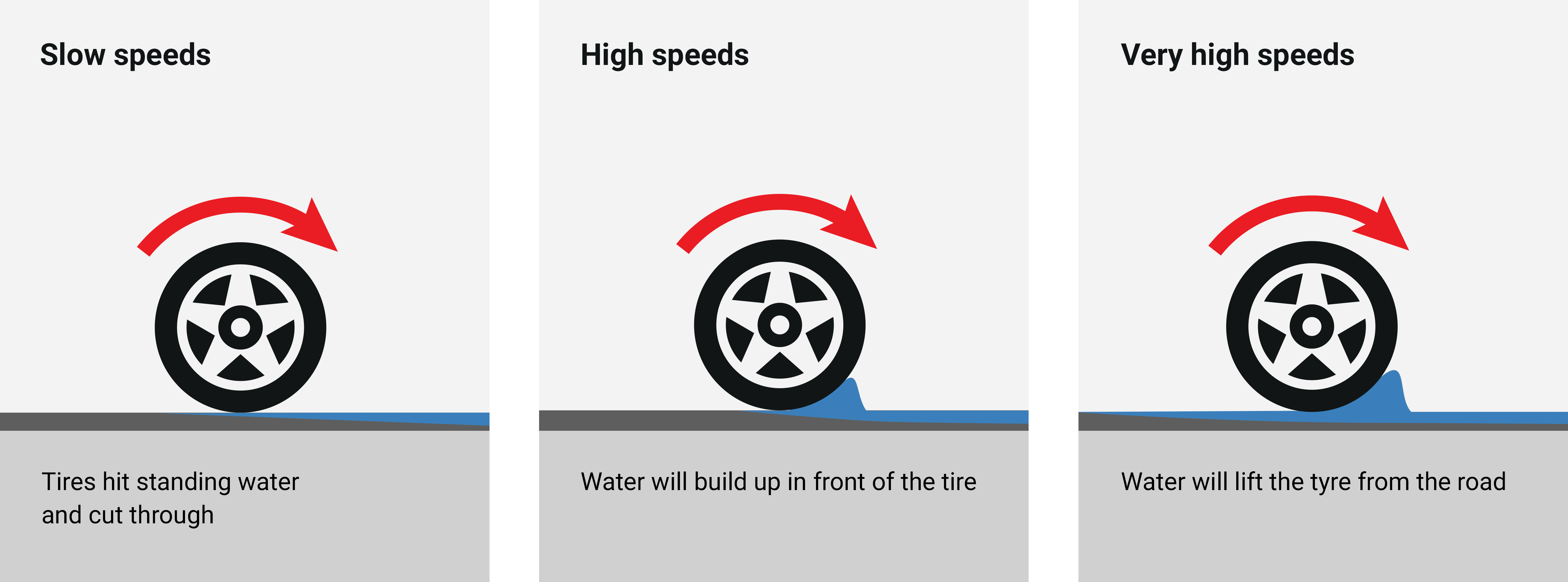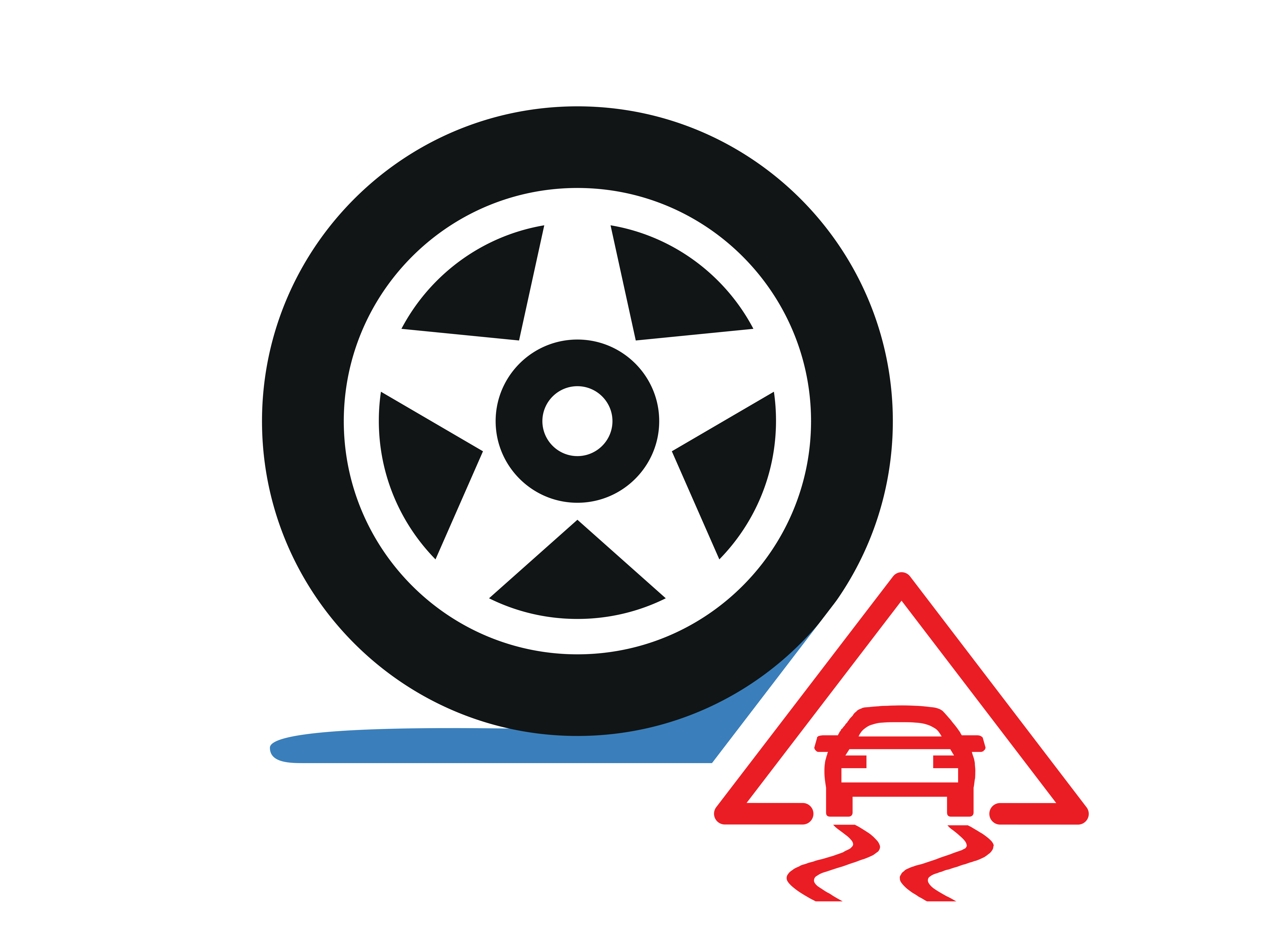
If you fit tyres designed for rain like all of our Uniroyal tyres, you should be able to enjoy driving in wet conditions. There’s no doubt that rain brings its own challenges, but many of these can be reduced if you know how to drive in heavy rain.

How to drive in heavy rain
- Watch your speed
- Leave plenty of distance between you and the car in front
- Use your headlights on dipped beam
- Use your air conditioning to prevent internal condensation
- Take your foot off the accelerator if you aquaplane. Do not brake
Before you set off
- Ask yourself if the journey is really necessary or whether it might be better to postpone until the worst of the rain has passed.
- If you do need to go, check your windscreen wipers before you set off. Your wiper blades – both front and rear – must be in good condition. If they’re not, change them straight away.
- Check your tyre tread depth. If you’re driving on summer or all-season tyres, we recommend a minimum tread depth of 3mm. If you’re driving on winter tyres, we recommend 4mm.
- Fill up with fuel. Heavy rain often causes hold ups as cars break down or collide. The last thing you need is to be stuck in traffic with your wipers, heater and lights on but hardly any fuel.
- Familiarise yourself with the air conditioning and heater settings on your car so you know how to demist the interior quickly.
- Listen to the radio. Find out if there are any road closures, accidents or floods on your intended route and work out an alternative journey.
- Charge your mobile phone. You may need to pull over to let people know that you’re running late.
How to drive in heavy rain
Watch your speed and leave plenty of room – a gap of at least four seconds - between you and the car in front. Even if you’re driving with rain tyres, your stopping distances will be greater than on dry roads. If someone’s driving close on your tail, let them pass. It’s better to have them in front of you than behind.
Put your headlights on but keep them on a dipped beam. Do not use your fog lights.
Be conscious of spray from lorries and fast-moving vehicles. This could temporarily reduce your visibility. Equally, be considerate about your own spray and avoid driving fast through puddles close to pedestrians or cyclists.
Breakdown numbers do increase in the rain as damp can cause problems with electrics and engines. If you do break down, keep your bonnet closed to prevent any further damage. Do not try to restart your engine if it has cut out after you’ve driven through deep water.

Driving through puddles can cause aquaplaning if your tyres lose contact with the road surface. If your steering suddenly feels light, take your foot off the accelerator and allow your speed to reduce until you feel in control again. Do not brake until you’ve regained control. At that point it’s a good idea to gently brush your brake pedal to create some friction and heat – and therefore evaporate off any outstanding moisture.
What is Aquaplaning
And why is it so dangerous?
Aquaplaning happens when water builds up in front of your tyres faster than the weight of your vehicle is able to displace it. The result is that the water pressure pushes under the tyre, creating a thin layer of water between the rubber and the road surface.

Why is it so dangerous?
That thin layer of water is the difference between your tyre gripping the road and your car completely losing contact and sliding out of control. The deeper the water, and the faster your speed, the more likely this is to happen. Without the grip, you won’t be able to brake or steer.
What are the contributing factors of aquaplaning?
- Speed is the biggest contributor to aquaplaning, because your tyres simply don’t have time to channel the water away before they’re lifted off the surface. However, speed is not the only issue. Other variables include:
- Tread design. Some tread patterns channel water more effectively than others. For example, our RainSport and RainExpert tyres are designed to perform effectively when driving in the wet.
- Tyre size. The area of the contact patch i.e. the size and shape of the tyre surface touching the road, will have a direct effect on your risk of aquaplaning. The more surface area there is, the smaller the risk.
- Tread depth. As your tyres wear, their depth is reduced, leaving less room for water to be channelled away.
- Tyre pressure. For different reasons, both under-inflated and over-inflated tyres can increase your risk of aquaplaning.
- Water depth. The deeper the water, the harder it will be for your tyres to maintain their grip.
- Water composition. Factors like oil, dirt, salt and ambient temperature can affect the density of surface water.
- Vehicle’s drivetrain (aka powertrain/driveline). In certain conditions 4-wheel drive vehicles are more likely to aquaplane that 2-wheel drives.
- Vehicle weight. The lighter the car, the higher the chances of aquaplaning.
- Road surface condition. You are more likely to aquaplane on smooth roads than on grooved surfaces.
How do I know if I’m aquaplaning?

When your drive wheels lose traction with the road, you’ll notice a rise in the engine revs and an inaccurate reading on your speedometer as your wheels begin to spin.
If you’re driving round a bend and you lose traction in your front wheels, your car will drift towards the outside of the bend. If your back tyres lose traction, you’ll move sideways into a skid. If all four tyres lose traction at once, your car will slide in a straight line. If you’re turning at the time you’ll slide into the outside of the bend. When any of the tyres regain their traction, you might experience a sudden jerk in whichever direction that tyre is facing.
When does aquaplaning mostly happen?
You’re most likely to aquaplane when driving through puddles or standing water. It’s not always easy to see how deep a puddle is so always reduce speed if there has been a lot of rainfall.
Puddles tend to form at the side of the road, along the pavement edge. So, if it’s been raining, move your car towards the centre of the road or lane.
Drive in the tyre tracks left by the cars in front of you. Their tyres will already have displaced a lot of the surface water before yours have to.
Why don’t electronic stability control systems prevent aquaplaning?

Electronic stability control systems only work when you have contact with the road. While they may be able to help you recover from a skid, once the tyre has regained its traction, they can’t help prevent aquaplaning.
As a side note, you should never use cruise control when driving on wet or icy roads as you may need to reduce your speed smoothly and manually.
Why do Uniroyal tyres have such a good reputation for aquaplaning protection?
Uniroyal invented the rain tyre in 1969 and, ever since, its designers and engineers have pioneered wet weather technology. The Shark Skin Technology (SST) used in our RainSport and RainExpert tyres, for example, efficiently and swiftly disperses water, so the risk of aquaplaning is reduced.
Singing in the rain
Learn to love the rain
It may be raining. It may be pouring. But that doesn’t mean your drive has to be boring. You could be miserable about how the rain is exhausting, tiring and annoying or you could learn to love the rain.

Be loud and proud
Did you know that group singing can actually lower stress, relieve anxiety and release your happy endorphin hormones? Plus, it’s great fun and keeps you awake and alert while you’re driving.
To help you appreciate the rain, we’ve put together the ultimate wet weather playlist. On it you’ll find the best sing-along-songs to boost your spirits.
Enjoy your top 20 downpour download
- Singing in the rain – Gene Kelly
- Africa – Toto
- Fragile – Sting
- After the rain has gone – Shirley Bassey
- Raindrops keep falling on my head – B J Thomas
- I can’t stand the rain – Aretha Franklin
- Purple rain – Prince
- Rain – The Beatles
- Here comes the rain again – Eurythmics
- It’s raining men – The Weathergirls
- Why does it always rain on me? – Travis
- Let it rain – Eric Clapton
- Raindrops – Basement Jaxx
- Rusted from the rain – Billy Talent
- Rain – Rag ‘n’ Bone Man and Kate Tempest
- Set fire to the rain – Adele
- November rain – Guns ‘n’ Roses
- Cloudbusting – Kate Bush
- Thunder Road – Bruce Springsteen
- Downpour – Backstreet Boys
Download playlist on Spotify
Related Topics
-
 2023/09/20Summer or winter tyresRead more
2023/09/20Summer or winter tyresRead more -
 2023/09/20Safety & Driving TipsRead more
2023/09/20Safety & Driving TipsRead more -
 2023/09/20Tyre materialRead more
2023/09/20Tyre materialRead more